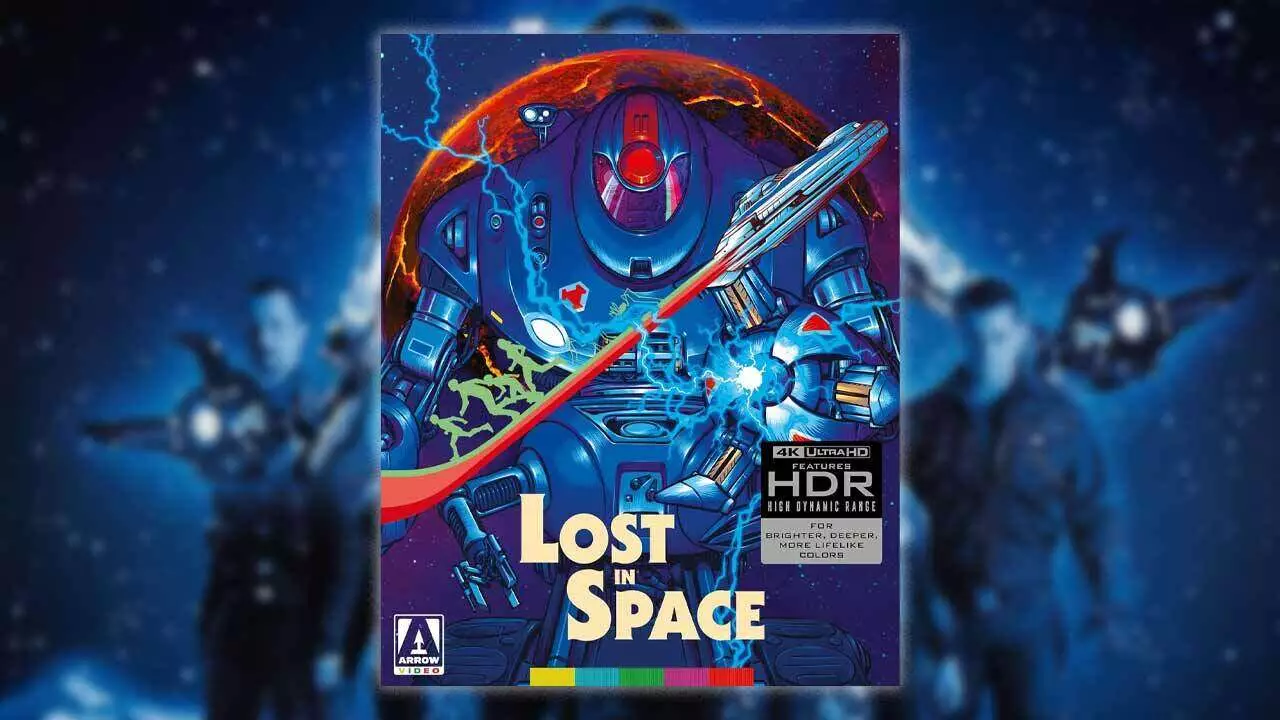The late 1990s marked an era where science fiction cinema was both experimental and ambitious, and “Lost in Space” (1998) epitomized this creative spirit. Often underrated, this film attempted to rejuvenate a beloved 1960s television series—melding nostalgia with cutting-edge visuals for its time. Now, thanks to Arrow Video’s meticulous restoration, this cinematic artifact is receiving a dedicated 4K Blu-ray release that promises to redefine how audiences experience it. This upgrade isn’t merely about sharper images; it’s a revival of the movie’s core essence, brought to life through a painstaking restoration process directly from the original negatives. The result is an opportunity for both longtime fans and newcomers to appreciate the film’s ambitious visuals and storytelling in unprecedented detail.
What makes this release particularly compelling isn’t just the technical upgrade, but also the thoughtfully curated bonus content. It’s a celebration of the film’s legacy—layered with insights from those who crafted it and contextualized by critics and historians. This comprehensive approach underscores the recognition that “Lost in Space” deserves a second chance to find its place within the pantheon of sci-fi epics, especially as visual effects and storytelling now stand on much more advanced footing.
Restoration as a Cultural Reclamation
The detailed 4K restoration process captures the film’s visionary visual effects, alien landscapes, and space sequences with an unmatched degree of clarity. Every laser blast, planetary vista, and spacecraft is endowed with new life, offering a more immersive experience that wasn’t possible during its initial release. For a movie that was groundbreaking at the time, this restoration acts as a cultural reclamation—an acknowledgment that the film’s visual artistry has enduring value, warranting preservation and celebration.
Director Stephen Hopkins’ involvement in approving the transfer enhances the authenticity of this release. It signals a commitment to maintaining the film’s original tone, aesthetic, and storytelling intent. The newly remastered visuals not only restore the film’s intended spectacle but also invite viewers to critique and appreciate how visual effects have evolved. It also raises intriguing questions regarding the film’s influence on subsequent sci-fi productions and the importance of preserving its visual identity amidst today’s CGI-heavy landscape.
Beyond the Screen: Deep Dives Into Creative Minds
An essential component of this release is the extensive array of new and archival interviews. These conversations with director Stephen Hopkins, screenwriter Akiva Goldsman, and key crew members paint a richer picture of the creative process behind “Lost in Space.” Watching these discussions illuminates the challenges faced during production, the innovative techniques employed, and the visionary ideas that propelled this space adventure.
Furthermore, the inclusion of behind-the-scenes documentaries and the original production notes provides context to the film’s development, turning the viewing experience into an educational journey. For enthusiasts and scholars, these extras offer invaluable insights into how the film was crafted—from conceptual art to the meticulous building of visual effects—and how it aimed to portray a hopeful, expansive vision of humanity’s future in space.
Reevaluating the Film’s Legacy in Modern Context
In modern times, “Lost in Space” has often been overshadowed by more commercially successful blockbusters or the more recent TV adaptations. However, the film’s themes—exploration, family bonds, and the resilience of human spirit—remain profoundly relevant. Its portrayal of an optimistic vision of space travel, intertwined with the character dynamics of the Robinson family, echoes contemporary conversations about humanity’s future beyond Earth.
This new edition isn’t just a nostalgia trip; it’s an invitation to reexamine “Lost in Space” as a pioneering work that pushed technological boundaries and attempted to elevate the sci-fi genre beyond disposable entertainment. The lush visuals, combined with the thoughtful bonus content, position this release as a necessary addition to any serious sci-fi collection, elevating the film from a forgotten relic to a celebrated piece of cinematic history.
As digital restoration techniques continue to improve, films like “Lost in Space” demonstrate how visual and cultural preservation can breathe new life into stories that once seemed destined for obscurity. This release challenges viewers to approach classic science fiction not as mere nostalgia but as vital cultural narratives that deserve further exploration and appreciation.

